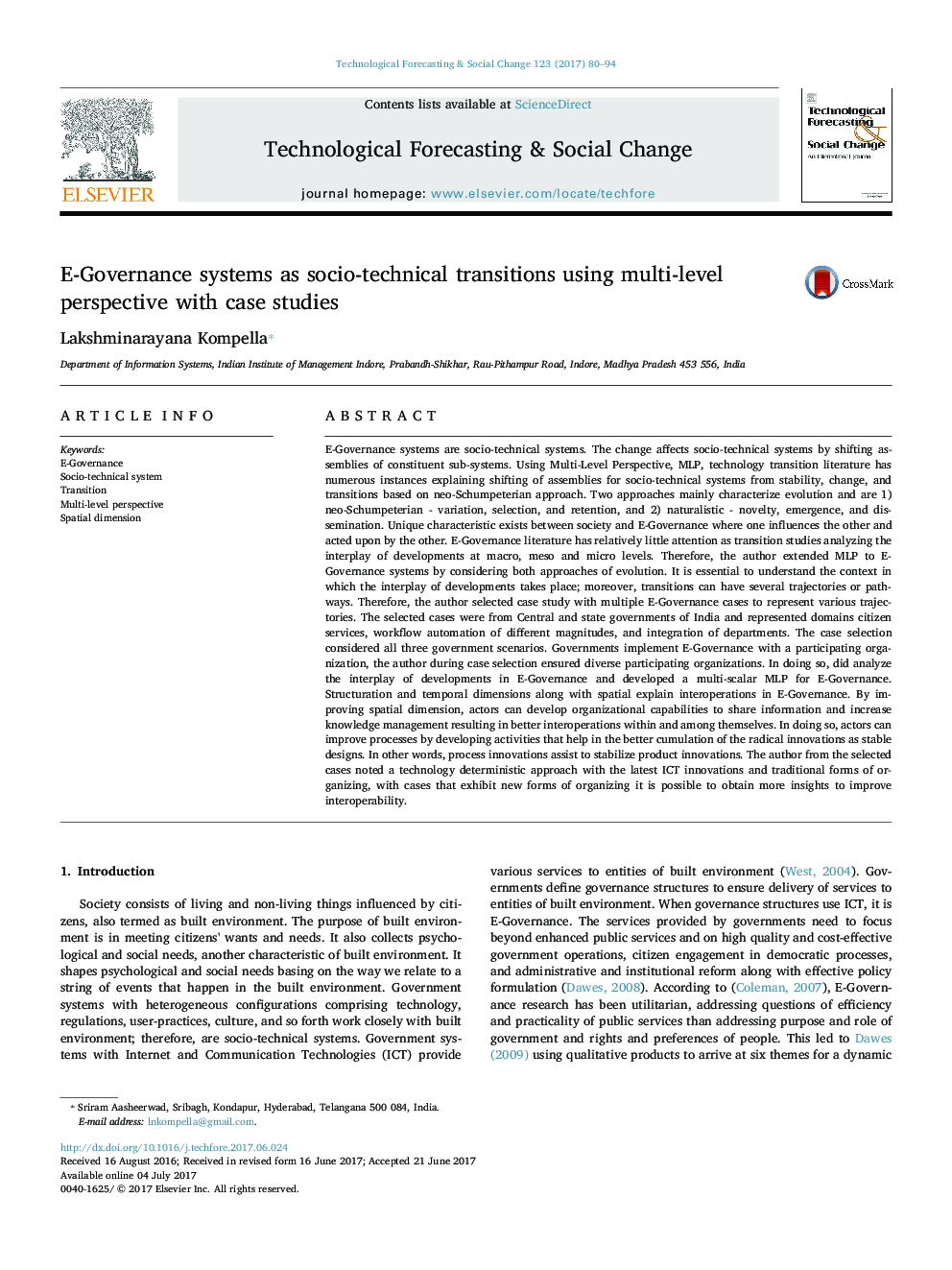| Article ID | Journal | Published Year | Pages | File Type |
|---|---|---|---|---|
| 5036802 | Technological Forecasting and Social Change | 2017 | 15 Pages |
â¢Author extended multi-level perspective (MLP) to E-Governance systems.â¢MLP is multi-scalar with dimensions structural, temporal and spatial.â¢Selected diverse cases from Government of India to represent all MLP trajectories.â¢Specific actions, unseen in cases, vital to cumulate innovations as stable designs.â¢Stable designs help in harmonious interoperations and other entities to coevolve.
E-Governance systems are socio-technical systems. The change affects socio-technical systems by shifting assemblies of constituent sub-systems. Using Multi-Level Perspective, MLP, technology transition literature has numerous instances explaining shifting of assemblies for socio-technical systems from stability, change, and transitions based on neo-Schumpeterian approach. Two approaches mainly characterize evolution and are 1) neo-Schumpeterian - variation, selection, and retention, and 2) naturalistic - novelty, emergence, and dissemination. Unique characteristic exists between society and E-Governance where one influences the other and acted upon by the other. E-Governance literature has relatively little attention as transition studies analyzing the interplay of developments at macro, meso and micro levels. Therefore, the author extended MLP to E-Governance systems by considering both approaches of evolution. It is essential to understand the context in which the interplay of developments takes place; moreover, transitions can have several trajectories or pathways. Therefore, the author selected case study with multiple E-Governance cases to represent various trajectories. The selected cases were from Central and state governments of India and represented domains citizen services, workflow automation of different magnitudes, and integration of departments. The case selection considered all three government scenarios. Governments implement E-Governance with a participating organization, the author during case selection ensured diverse participating organizations. In doing so, did analyze the interplay of developments in E-Governance and developed a multi-scalar MLP for E-Governance. Structuration and temporal dimensions along with spatial explain interoperations in E-Governance. By improving spatial dimension, actors can develop organizational capabilities to share information and increase knowledge management resulting in better interoperations within and among themselves. In doing so, actors can improve processes by developing activities that help in the better cumulation of the radical innovations as stable designs. In other words, process innovations assist to stabilize product innovations. The author from the selected cases noted a technology deterministic approach with the latest ICT innovations and traditional forms of organizing, with cases that exhibit new forms of organizing it is possible to obtain more insights to improve interoperability.
